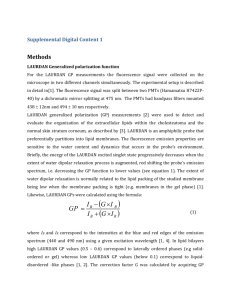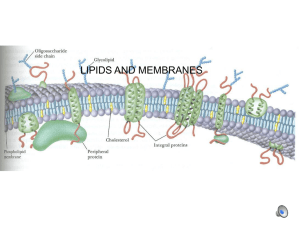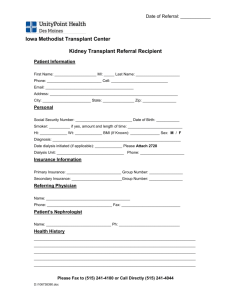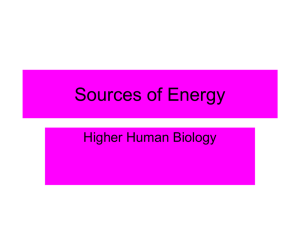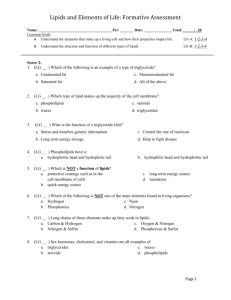Preparation of GPI-anchored protein
advertisement
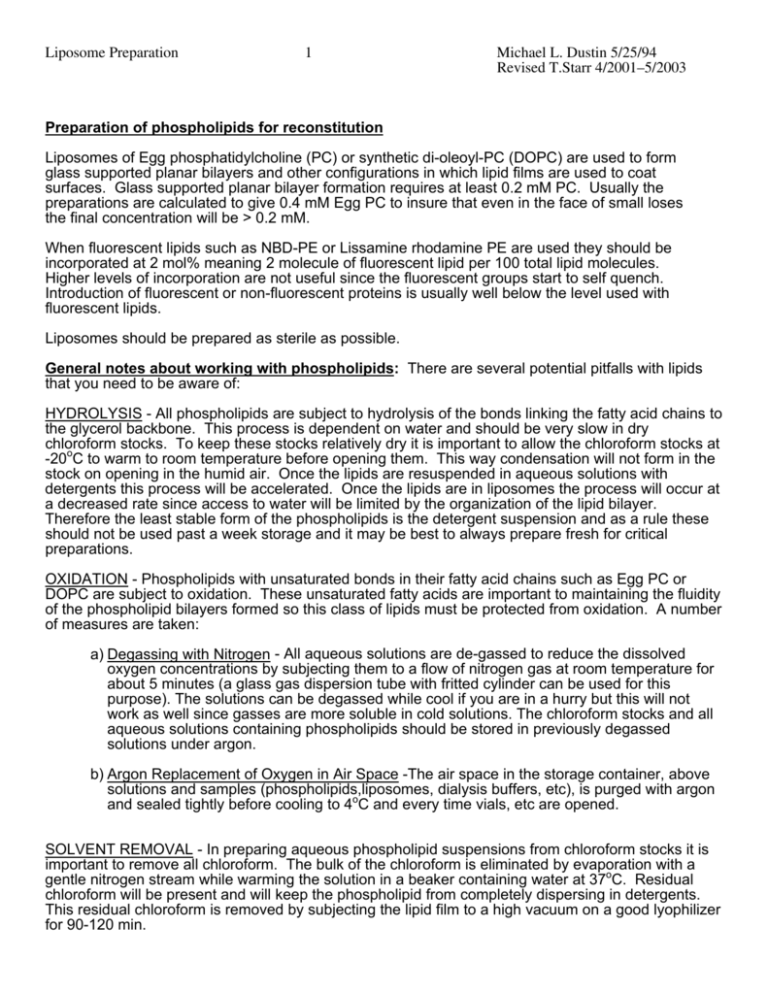
Liposome Preparation 1 Michael L. Dustin 5/25/94 Revised T.Starr 4/2001–5/2003 Preparation of phospholipids for reconstitution Liposomes of Egg phosphatidylcholine (PC) or synthetic di-oleoyl-PC (DOPC) are used to form glass supported planar bilayers and other configurations in which lipid films are used to coat surfaces. Glass supported planar bilayer formation requires at least 0.2 mM PC. Usually the preparations are calculated to give 0.4 mM Egg PC to insure that even in the face of small loses the final concentration will be > 0.2 mM. When fluorescent lipids such as NBD-PE or Lissamine rhodamine PE are used they should be incorporated at 2 mol% meaning 2 molecule of fluorescent lipid per 100 total lipid molecules. Higher levels of incorporation are not useful since the fluorescent groups start to self quench. Introduction of fluorescent or non-fluorescent proteins is usually well below the level used with fluorescent lipids. Liposomes should be prepared as sterile as possible. General notes about working with phospholipids: There are several potential pitfalls with lipids that you need to be aware of: HYDROLYSIS - All phospholipids are subject to hydrolysis of the bonds linking the fatty acid chains to the glycerol backbone. This process is dependent on water and should be very slow in dry chloroform stocks. To keep these stocks relatively dry it is important to allow the chloroform stocks at -20oC to warm to room temperature before opening them. This way condensation will not form in the stock on opening in the humid air. Once the lipids are resuspended in aqueous solutions with detergents this process will be accelerated. Once the lipids are in liposomes the process will occur at a decreased rate since access to water will be limited by the organization of the lipid bilayer. Therefore the least stable form of the phospholipids is the detergent suspension and as a rule these should not be used past a week storage and it may be best to always prepare fresh for critical preparations. OXIDATION - Phospholipids with unsaturated bonds in their fatty acid chains such as Egg PC or DOPC are subject to oxidation. These unsaturated fatty acids are important to maintaining the fluidity of the phospholipid bilayers formed so this class of lipids must be protected from oxidation. A number of measures are taken: a) Degassing with Nitrogen - All aqueous solutions are de-gassed to reduce the dissolved oxygen concentrations by subjecting them to a flow of nitrogen gas at room temperature for about 5 minutes (a glass gas dispersion tube with fritted cylinder can be used for this purpose). The solutions can be degassed while cool if you are in a hurry but this will not work as well since gasses are more soluble in cold solutions. The chloroform stocks and all aqueous solutions containing phospholipids should be stored in previously degassed solutions under argon. b) Argon Replacement of Oxygen in Air Space -The air space in the storage container, above solutions and samples (phospholipids,liposomes, dialysis buffers, etc), is purged with argon and sealed tightly before cooling to 4oC and every time vials, etc are opened. SOLVENT REMOVAL - In preparing aqueous phospholipid suspensions from chloroform stocks it is important to remove all chloroform. The bulk of the chloroform is eliminated by evaporation with a gentle nitrogen stream while warming the solution in a beaker containing water at 37oC. Residual chloroform will be present and will keep the phospholipid from completely dispersing in detergents. This residual chloroform is removed by subjecting the lipid film to a high vacuum on a good lyophilizer for 90-120 min. Liposome Preparation 2 Michael L. Dustin 5/25/94 Revised T.Starr 4/2001–5/2003 - Glass tubes used for fluorescent lipid work should be pre-rinsed with high grade chloroform prior to use and the rinse disposed of in an organic waste container in the hood. The organic solvents may dissolve things that are not dissolved by the normal washing procedures. - Never use plastics with the solvents since you will contaminate the solvent with dissolved plastic. -Air-water interfaces: The other general issue is that phospholipids are attracted to gas/liquid interfaces. This is an issue during reconstitution steps in which the detergent is being removed and the lipids have a number of ways in which to partition the exposed fatty acid chains away from water: liposome formation, surface adsorption and deposition at the gas/liquid interface. When liposome preparation is the goal a minimal surface area should be provided to surface adsorption and no air liquid interfaces (bubbles or air spaces) in the system. When reconstituting by dialysis this usually requires an appropriate choice of dialysis membrane size and total exclusion of air from the closed dialysis bag using closure clips at the expense of loosing some of the solution to be reconstituted. Phospholipid Suspensions: Phospholipids are purchased from Avanti Polar lipids and supplied in chloroform. Calculate the amount of EggPC, DOPC, NBD-PE, and lissamine rhodamine PE required for production of 2 ml of solution at 4 mM, 4mM, 80 µM, and 80 µM respectively: Useful molecular weightsEgg PC DOPC 760.08 786.15 NBD-PE (acyl) 880.08 Lissamine rhodamine-PE (acyl) 1259.08 - ICAM-1, I-Ek, and other membrane proteins are routinely reconstituted in DOPC phospholipid. - Prepare lipid films individually by evaporation of the appropriate volume in a glass tube (place tube in beaker filled with water at 37oC and pass stream of nitrogen gas above chloroform solution while swirling tube). After chloroform appears evaporated place tube under vacuum (good lyophilizer) for 90-120 min. - Dissolve evaporated lipid in 2 ml of degassed TS (25mM Tris pH8.0-150mM NaCl) containing 2% n-Octyl-Beta-D-Glucopyranoside (OG) detergent. If LFA-1 is going to be used with lipids include 2 mM MgCl2. Dissolve under argon in a sealed tube by covering tube with parafilm while streaming argon gas above solution. While dissolving place tube in sonicator with gentle mixing until solution appears crystal clear. Filter through a 0.22 µm cellulose acetate filter and store under argon at 4oC or lipid may be filtered after combining with protein sample (Routinely the latter is performed). These lipid stocks are all 10X final concentration. Protein samples: Membrane proteins in 1% OG buffered saline may be incorporated into liposomes by adding any proportion of the solubilized membrane proteins into the reconstitution mixture with 1X phospholipids and 1-2% OG final. Typically the fractions obtained from immunoaffinity purification will be active in the range of 1% to 90% of the final volume. Reconstitution: A mixture containing OG solubilized lipids and membrane proteins is prepared in 12% OG in an ice bucket. The closer to 2% OG the better since this will give you more buffering against rapid detergent dilution which might lead to multilamellar vesicle (MLV) formation. MLV are easily spotted due to high turbidity. Large unilamellar vesicles (LUV) are perfectly clear at 0.4 mM PC. Liposome Preparation 3 Michael L. Dustin 5/25/94 Revised T.Starr 4/2001–5/2003 A typical 1 ml reconstitution mixture contains and is prepared in 3.5ml Sarstedt tube (15 x 55mm): -100 µl of 4 mM egg PC or DOPC -[100 µl of 80 µM fluorescent lipid (optional)] Not added if labeled membrane proteins are being reconstituted. -10-900 µl of membrane protein (1% OG) -X µl 2% OG Tris-saline (degassed) The balance of the 1 ml should be made up of 2% OG in TS (with MgCl2 if LFA-1 is involved). If you are using non-fluorescent membrane protein you may want to include a fluorescent phospholipid to check bilayer integrity but this is not routine. If you are incorporating fluorescent membrane proteins then you do not want to have the fluorescent phospholipids anywhere near this material since the quantity of fluorescent molecules in the labeled membrane proteins is relatively small and even trace contamination with fluorescent lipids could ruin a prep. For membrane proteins pure eggPC or DOPC liposomes can be prepared at the same time. These liposomes are used for the dilution of labeled membrane protein liposomes in bilayers. Filtration of Reconstitution Mixture: The protein-PC mixture is taken up in 1.0 ml slip-tip tuberculin syringe (take in small amount of air in syringe first). A small sterile cellulose acetate filter (0.22 microns –3mm) for syringe is placed on tip after the mixture is taken up. Mixture is then filtered into Sarstedt 2.0 ml micro vials, being careful not to expel last volume if extremely small bubbles are present (appearing as an almost solid white area). Dialysis: Rehydrate 6 mm dialysis tubing (Spectra/Por 10mm flat diam /12-14,000 MWCO) sections in water and rinse with water (boil for 10min in microwave). The transfer of protein-phosholipiddetergent mixtures to dialysis bags are performed in a laminar flow hood. Tie a knot at one end and then rinse out the interior of the dialysis bag with 1 ml of 2% OG in TS and remove this as completely as possible. Add your mix(es) and clamp the open end with a small dialysis tube closure (Spectrum) so as to exclude all air. Air removal usually requires sacrifice of a small volume of the sample, which is left above the closure. Immerse the sample in 500 ml to 1 L of 25mM Tris-0.15M NaCl pH7.5 (RT) (plus 2 mM MgCl2 is LFA-1 is involved). The TS buffer for dialysis should be degassed in screw cap bottles with nitrogen at room temperature - any air on top should be purged with argon and capped immediately. Buffer can then be cooled to 4oC before placing samples into bottle for dialysis. Change the dialysis buffer twice after 12 and 24 hrs and remove the liposome suspension at 36 hrs, also in a laminar flow hood. Cut dialysis tubing above clip, carefully open tubing and transfer samples to 2 ml Sarstedt vials (Microtube) in an ice bucket and cap with argon purge. Store at 4oC, do not freeze.
